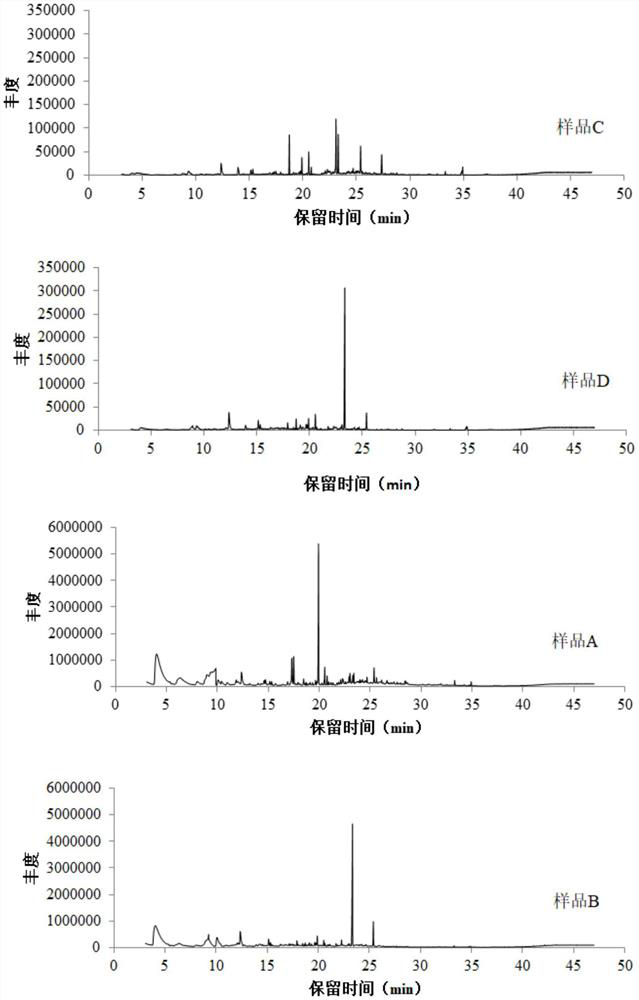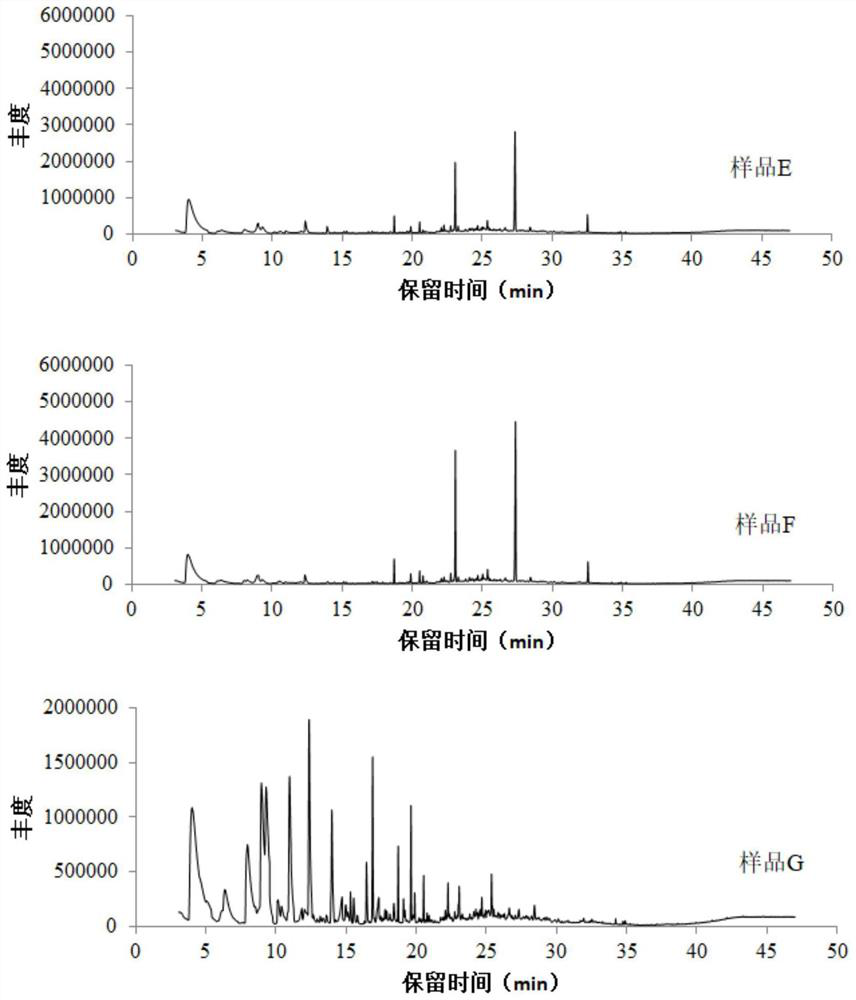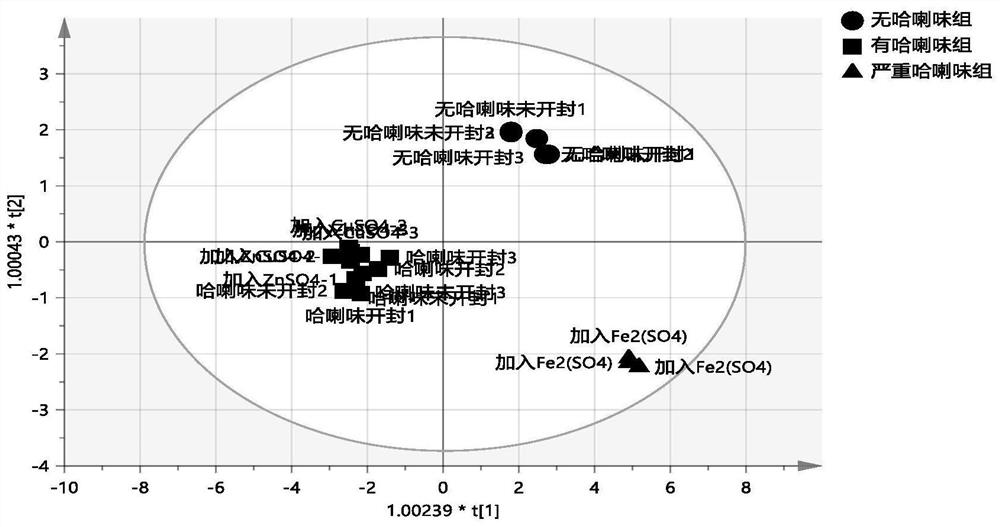Method for measuring oxidative rancidity degree of infant formula rice flour and application of method
A technology for formula and determination method for infants and young children is applied in the field of determination of the degree of oxidative rancidity of infant formula rice flour, which can solve the problems of inability to determine substances affecting odor and taste, inability to evaluate the degree of oxidative rancidity of products, and reduce the uncertainty of sensory scores. effectiveness, overcoming over-dependence, increasing efficiency and automation
- Summary
- Abstract
- Description
- Claims
- Application Information
AI Technical Summary
Problems solved by technology
Method used
Image
Examples
Embodiment 1
[0038] Embodiment 1 establishes the assay method of the degree of oxidative rancidity of formula rice flour for infants and young children
[0039] 1.1 Experimental equipment and reagents
[0040] Experimental equipment: Tracel1310-TSQ8000Evo gas chromatography-mass spectrometry instrument, 20mL headspace sampling bottle and safety bottle cap, NV422ZH electronic balance.
[0041] Standards and reagents: (E)-2-octenal (purity 95%), nonanal (purity 98.0%), decanal (purity 98.0%) and 2-pentylfuran (purity 98.0%), copper sulfate ( Purity 99%), zinc sulfate (purity 99%), ferric sulfate (purity 99%), experimental water is ultrapure water.
[0042] 1.2 Experimental method
[0043] Because the target substance to be tested is a volatile substance, the unopened sample should be placed in a refrigerator at 4°C for more than 4 hours before weighing the infant formula rice flour sample.
[0044] (1) Refer to GB / T 16291.1-2012 "General Guidelines for Selection, Training and Management o...
Embodiment 2
[0119] Example 2 Infant Formula Rice Flour Detection
[0120] The 7 infant formula rice flour samples to be tested are numbered S1-S7. According to the data obtained by headspace solid-phase microextraction gas chromatography mass spectrometry and the sensory score fitting equation described in Example 1, the calculated sensory score of the sample and the results of the sensory evaluation of the sample directly by the sensory evaluator are shown in Table 11. .
[0121] Table 11 Contents of volatile substance markers in samples, sensory scores, and fitting equation scores
[0122]
[0123] Using SPSS software to compare the significant differences between the sensory scores and the fitting equation scores of the 7 samples of infant formula rice noodles to be tested, the results showed that the significance sig value of the sensory scores and the fitting equation scores was 0.855>0.05, and the scores of the two The difference between them is not significant, and the equatio...
PUM
 Login to View More
Login to View More Abstract
Description
Claims
Application Information
 Login to View More
Login to View More - R&D
- Intellectual Property
- Life Sciences
- Materials
- Tech Scout
- Unparalleled Data Quality
- Higher Quality Content
- 60% Fewer Hallucinations
Browse by: Latest US Patents, China's latest patents, Technical Efficacy Thesaurus, Application Domain, Technology Topic, Popular Technical Reports.
© 2025 PatSnap. All rights reserved.Legal|Privacy policy|Modern Slavery Act Transparency Statement|Sitemap|About US| Contact US: help@patsnap.com



